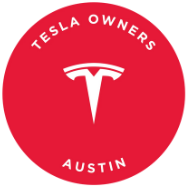Sales of electric vehicles have been on the rise, with Cox Automotive reporting a significant increase in third-quarter sales. Tesla also saw a strong performance in the third quarter for its made-in-China EVs, marking a turnaround from the previous two quarters.
Despite the uncertainty surrounding the future of the battery belt projects, most of the battery plants are still moving forward with their construction. Hyundai’s Metaplant in Georgia and Ford’s battery factories in Michigan and Kentucky are among those still progressing.
However, the risk of overcapacity looms large. By 2030, the planned battery plants could have the capacity to produce 13 to 15 million EVs annually, according to Benchmark Intelligence. This far exceeds the predicted demand, with S&P Global Mobility estimating only around 3 million EVs being produced that year. This could result in excess factory space and potential inefficiencies in the industry.
Nevertheless, there is hope that the forecasts may not fully capture the potential shift in the market. The high prices of electric vehicles compared to traditional gasoline vehicles have been a significant barrier to adoption. With the upcoming wave of more affordable and compelling EV models, there is a chance that the market dynamics could change drastically.
Overall, the future of North America’s battery belt remains uncertain. The industry faces challenges such as slowing EV demand, the rollback of federal EV tax credits, and the risk of overcapacity. However, there is also potential for innovation and growth, especially with the promise of more affordable and appealing electric vehicles on the horizon. The coming years will be crucial in determining the fate of the battery belt and its role in shaping the future of the automotive industry.
It’s an exciting time for the electric vehicle (EV) market, with major developments from Tesla and General Motors shaking up the industry. Tesla recently introduced new Standard trims for the Model Y and Model 3, making these popular EVs more accessible to a wider range of consumers. Meanwhile, General Motors unveiled the next-generation Chevy Bolt, now the most affordable EV in America with a starting price under $30,000.
Despite concerns about battery overcapacity and market uncertainty, the EV landscape is evolving rapidly. Automakers are adapting to the changing market dynamics by focusing on hybrids and energy storage systems as a temporary hedge against the anticipated slowdown in EV sales.
U.S. Automakers Set New Records in Q3 EV Sales
In a recent report by Cox Automotive, it was estimated that U.S. EV sales for the third quarter reached approximately 410,000 units. However, the final numbers surpassed expectations, with Americans purchasing a total of 438,487 electric vehicles between June and September. This marked a nearly 30% year-over-year growth and pushed EVs to 10.5% of total U.S. vehicle sales, a new record.
Tesla continued to lead the EV market, selling 179,525 vehicles in the quarter, a 7.5% increase from the previous year. The refreshed Model Y was a standout performer, with sales of 114,897 units, representing a nearly 30% year-over-year growth. Other models that saw strong demand included the Chevy Equinox EV, Hyundai Ioniq 5, and Honda Prologue.
Tesla’s Chinese-Made EVs Experience Sales Growth
Tesla’s Shanghai Gigafactory has not only been serving the Chinese market but has also become the company’s largest export hub. Sales of vehicles produced at the plant increased by nearly 3% in September to 90,812 units, according to data from the China Passenger Car Association.
For the quarter, Tesla sold a total of 241,890 China-made EVs, marking its fourth-highest total on record. Many of these vehicles were exported to Europe, and Tesla also initiated its first deliveries in India, expanding its global footprint.
Overall, the surge in EV sales, coupled with the introduction of more affordable models, signals a promising future for the electric vehicle market. As automakers continue to innovate and adapt to changing consumer preferences, the transition to electric mobility is expected to accelerate in the coming years.
government respond?
China’s battery overcapacity issue has been well-documented, with the country producing more batteries than it can currently use. This surplus has led to a decrease in battery prices and a shift in focus towards exporting batteries rather than solely relying on domestic demand.
With the rise of electric vehicles in the U.S., particularly with Tesla’s dominance in the market, there is a concern that the country may also face a similar overcapacity issue. As more automakers invest in electric vehicle technology and battery production, there is a potential for an oversupply of batteries in the market.
However, the key difference between China and the U.S. lies in the demand for electric vehicles. While EV sales in China have slowed down, the U.S. market is still growing, with more consumers looking to switch to electric vehicles. This growing demand could potentially absorb the excess battery production in the U.S. market.
Additionally, the launch of new, affordable electric vehicles with longer ranges and better performance could further drive the demand for batteries in the U.S. If these vehicles can compete on their own merits without relying on government subsidies, it could create a sustainable market for electric vehicles and batteries in the country.
With the potential for tens of thousands of jobs in the electric vehicle and battery industry, it is crucial for the U.S. government to support and invest in this growing sector. By promoting policies that encourage the production and adoption of electric vehicles, the government can help ensure a strong and sustainable market for batteries in the country.
Overall, while the U.S. may face challenges in managing battery overcapacity, the growing demand for electric vehicles and the potential for new, innovative products could help mitigate these issues. By supporting the electric vehicle industry and investing in sustainable solutions, the U.S. can avoid the pitfalls of overcapacity seen in China and create a thriving market for electric vehicles and batteries.

